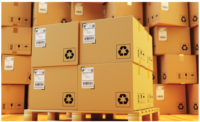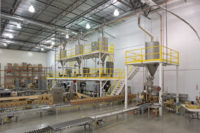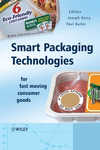While smart packaging is generating significant buzz in the packaging industry, there are a couple of big factors that are holding back the technology from mainstream adoption.
Arguably the biggest prohibiting factor is cost.
Thinfilm has long been in the business of printed electronics and providing NFC (near field communication) solutions to its customers. It has accomplished this through its roll-to-roll (R2R) printing method for its NFC labels, which consists of printing thousands of feet of sensors in sheets at high speeds. Presently, Thinfilm produces several million of these NFC labels each month, but the company is opening a new San Jose, California, facility at the end of Q1 2017 that will enable it to print billions each year.
We recently caught up with Bill Cummings, Thinfilm SVP of corporate communications, to get a better idea of how this development can move smart packaging forward.
On the significance of the new R2R printing facility:
“What that really means is that we will be able to offer our smart packaging solutions to many of the high-volume consumer brands that we’re currently engaged with. It doubles the space that we currently have and offers a modern clean room of about 22,000 square meters. That’s twice as large as the current clean room and it’s light years ahead in terms of its modern nature and state-of-the-art position.”
On how the additional production capacity can help move smart packaging forward:
“The higher the volumes you can manufacture, typically the lower the cost will be. When we’re talking about ultra-high volumes and the Internet of things (IoT), connecting devices in the world and really getting down to the disposables level, we’re not talking about tens or hundreds of millions anymore, or even a billion items – we’re talking about tens and hundreds of billions of items. In order to infuse intelligence out to that level, really extend traditional boundaries of the IoT and start thinking about the Internet of everything, you really need a paradigm shift from a materials standpoint and a manufacturing standpoint. The paradigm shift that we see really is one of materials and profits from that manufacturing technique, and it speaks to printed electronics. Today, we’re manufacturing our NFC shifts here in a sheet-based process, and we’re able to produce in the millions per month. What we really need is to scale that manufacturing, that’s where the R2R manufacturing comes into play. This R2R line is really going to allow us to scale that to billions of units and bring that cost point down. Now it becomes an affordable consideration for these well-known brands to incorporate into the packaging and make their products smart.”
On brand challenges that smart packaging can help brand owners overcome:
If you look at the brands out there, one of the main challenges that has developed over time is really a loss of a direct connection with their consumers. If you look at how things work in the market today relative to how consumers get their information … look at how those conversations are controlled today. (Consumers are) using their smartphones. If the consumer is looking to make a purchase, they’ll go to one of three types of sites: Google, social media and eCommerce. And what you end of having is a conversation with a consumer that’s mediated by a non-brand entity. The brand really loses control of the conversation and the information that is pushed to the consumer is really pushed by algorithms. What we see with NFC, printing them at high volumes, getting them on packages and leveraging the smartphone is that the brand is now able to directly connect with the consumer. Speak to the consumer one-on-one, control the message, push the information they want to the consumer and build brand loyalty.
Thinfilm
www.thinfilm.no





